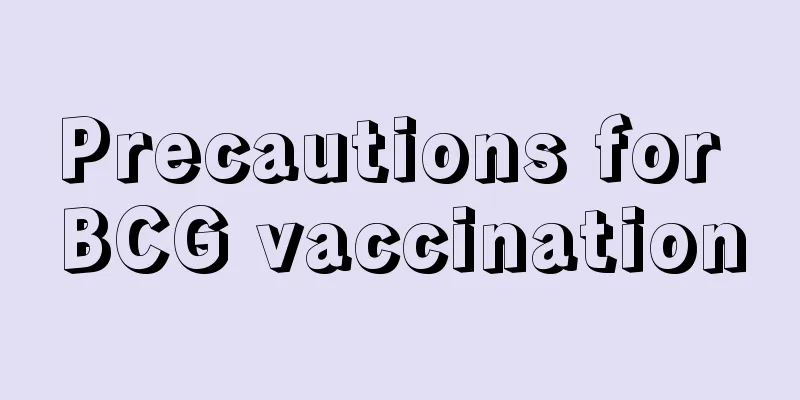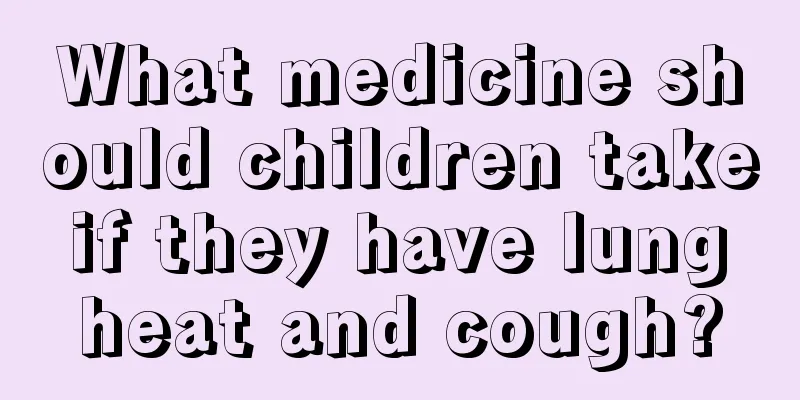Precautions for BCG vaccination

|
When it comes to the precautions for BCG vaccination, many people may not understand it, mainly because they are not very familiar with this name. In fact, the so-called BCG vaccination simply refers to the BCG vaccination, which is actually very similar to many other vaccines. BCG is mainly used to prevent tuberculosis in our body. After vaccination, the human body will produce corresponding antibodies, thus protecting the human body from tuberculosis. There are many things to pay attention to when getting the BCG vaccine, and BCG is usually given to children or infants, so relatively speaking, there are even more things to pay attention to when getting the BCG vaccine. In fact, in reality, many people have been vaccinated with BCG, but most of the time they are unaware of it. Below is a detailed introduction to the precautions for BCG vaccination. There will generally be some reactions at the vaccination site after BCG vaccination. If some parents do not understand the precautions for BCG vaccination, they will easily handle it incorrectly, leading to adverse consequences. Parents must read: Precautions for infant BCG vaccination Tools and materials: handkerchief, underwear Steps 1. During the "grouting" period, use a clean handkerchief to bandage the area when taking a bath to prevent water from splashing in. 2. Keep the area clean, do not scratch it with your hands, cut your nails frequently, and change your underwear frequently. 3. The vaccination will not cause systemic reactions. If you have fever or other symptoms, you should go to the hospital for treatment in time. Parents must read: Precautions for infant BCG vaccination 4. Other preventive injections should be given in the other arm. (It is recommended to go to a regular hospital or preventive clinic for vaccination). 5. Three months after vaccination, a positive test, also known as the PPD test, will be performed on the lumbar spine. If positive, it means antibodies have been produced. If negative, there are no antibodies and vaccination is still needed. Precautions After understanding the precautions for BCG vaccination, I believe you will know how to deal with your baby's local reactions after BCG vaccination. In fact, many of them are normal phenomena. As long as we fully understand and know the correct treatment methods, your baby can grow up healthily. Premature infants, infants with difficult births, and children with obvious congenital malformations, skin diseases, etc. are contraindicated from vaccination. After a newborn is vaccinated with BCG, it generally does not cause systemic reactions such as fever unless there are special circumstances. 2 to 8 weeks after vaccination, redness, swelling and nodules will appear locally, gradually forming small abscesses which will then disappear on their own. Some abscesses break through to form superficial ulcers with a diameter not exceeding 0.5 cm, and then scabs form. After the scabs fall off, permanent scars may be left locally, commonly known as card scars. In order to determine whether the vaccination is successful, you should go to the district tuberculosis prevention and control center for another tuberculin (OT) test 8 to 14 weeks after the vaccination. Local redness and swelling of 0.5 to 1.0 cm is normal. If it exceeds 1.5 cm, natural infection with tuberculosis bacteria must be ruled out. Generally, newborns can develop effective immunity 2 to 3 months after being vaccinated with BCG. About 3 to 5 years later, when they are in the first grade of elementary school, they can undergo another OT test. If the result is negative, they can be vaccinated with BCG again. Therefore, through the detailed introduction in the above article, I believe that everyone should have learned a lot about the precautions for BCG vaccination. This will have many benefits for our future life. At least in the future, when we encounter newborns receiving BCG vaccination, we can give valuable suggestions, which may be able to help them. This is a joyful thing. |
>>: Symptoms of bronchitis in children
Recommend
Newborn baby choked on amniotic fluid
Amniotic fluid is a very important substance. It ...
Three month old baby's head tilted back
We all know that in the first few months after a ...
What should I do if my child's chicken is inflamed?
A child's penis is the same as a man's pe...
What are the reasons for children to have headaches and vomiting but no fever?
In the process of growing up, babies often get si...
Are gloves okay for newborns?
Newborn babies are both cute and delicate. They a...
Can a child grow taller if his legs are thick?
When it comes to children's height growth, al...
How should scrotal hernia in children be treated?
It is very normal for newborns to have hernias. I...
What should I do if my child has lymph nodes?
Lymph nodes are very common in the human body and...
What is the reason for the blood streaks in the stool of a two-month-old baby?
What should we do if there is blood in the stool?...
Baby cough and phlegm massage technique
Due to the weather, the climate is relatively dry...
What happens after a newborn baby gets BCG?
The main purpose of giving BCG vaccination to new...
Can children's loose teeth be extracted?
If a child's teeth are loose during the perio...
What should I do if my eleven-month-old baby has trouble sleeping?
Poor sleep is not only a problem for adults, but ...
The rash has made the resistance stronger
Since newborns are separated from the protection ...
What to do if your one and a half year old baby has thinning hair
Many parents start to worry when their baby's...









